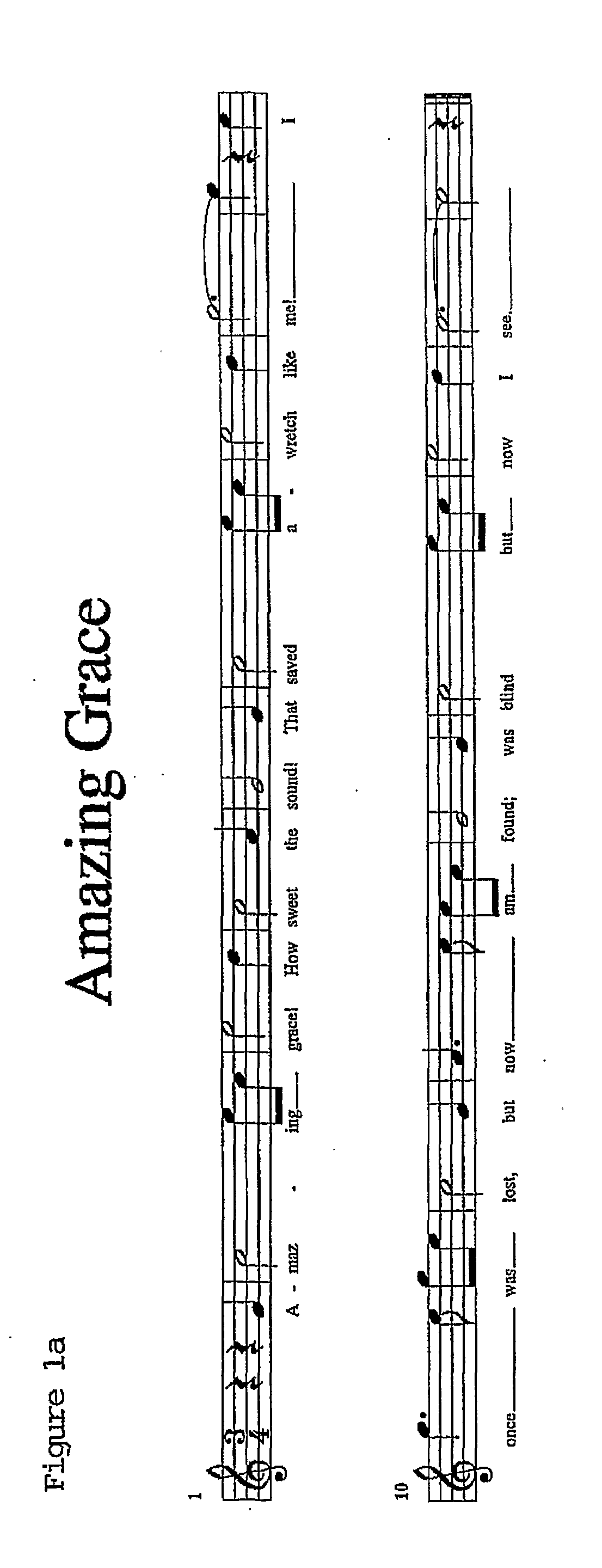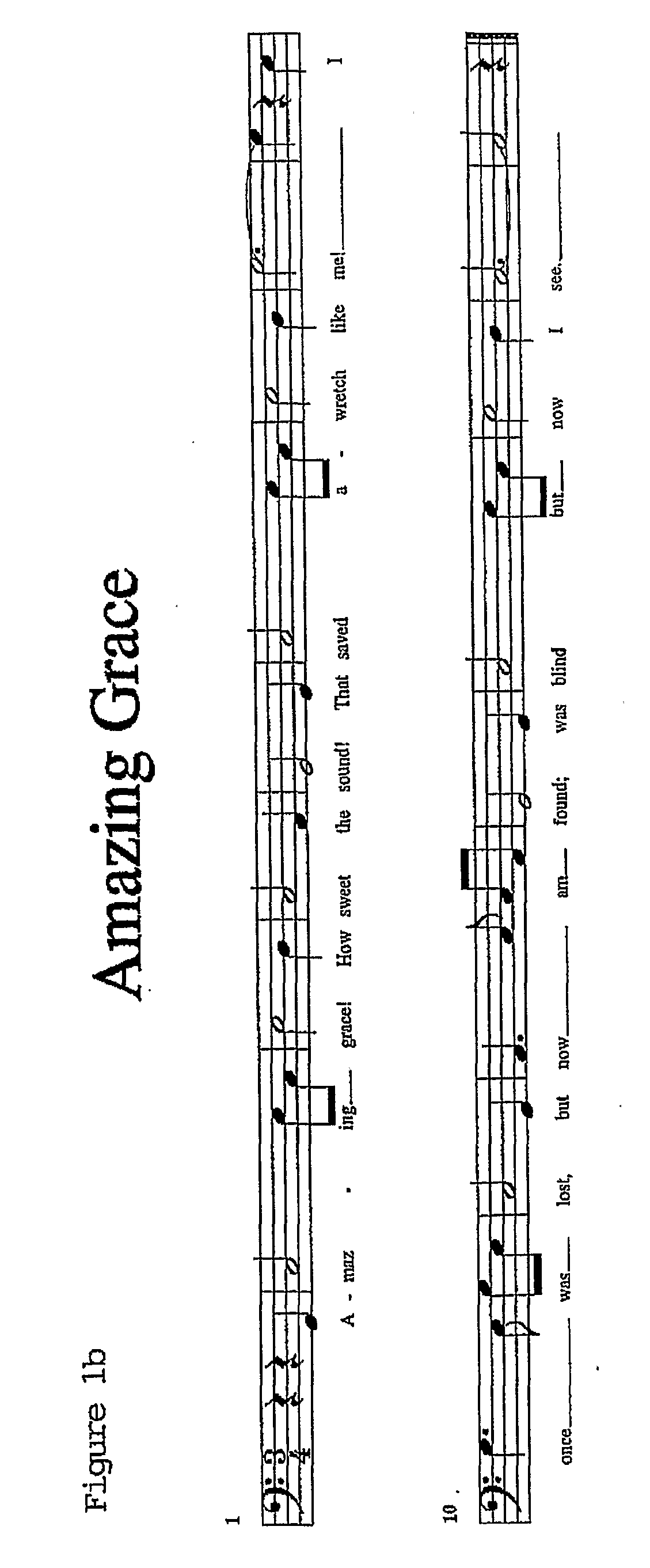Isomorphic Solfa Music Notation and Keyboard
a music notation and keyboard technology, applied in the field of music notation and musical instruments, can solve the problems of inconsistency between instruments, inconsistent spatial distance between vertical pairs, and none of these proposals has provided a sufficiently compelling benefit to become widely popular
- Summary
- Abstract
- Description
- Claims
- Application Information
AI Technical Summary
Benefits of technology
Problems solved by technology
Method used
Image
Examples
Embodiment Construction
[0161]FIG. 8a shows an embodiment of the isomorphic solfa staff. A unique clef symbol distinguishes it from the Nota Graph staff and from traditional notation. In this embodiment, to the left of the clef symbol, the staff is fully-lined; to the right of the clef symbol, the staff is of three-line form.
[0162] Instead of having each vertical location indicate one of the chromatic scale's pitches, as the Nota Graph staff does, the vertical locations on the isomorphic solfa staff denote the chromatic scale's simple intervals. For example, the isomorphic solfa staff has a unique vertical location for Do—but not for C. C can be anywhere on the staff, depending on its interval from the tonic of the current key.
[0163] In FIG. 8b the isomorphic solfa staff is shown with the solfa intervals indicated by each unique vertical location labelled with their solfa names. The name-labels are not part of the staff.
[0164] In the preferred embodiment, the thirteen unique vertical locations of the st...
PUM
 Login to View More
Login to View More Abstract
Description
Claims
Application Information
 Login to View More
Login to View More - R&D
- Intellectual Property
- Life Sciences
- Materials
- Tech Scout
- Unparalleled Data Quality
- Higher Quality Content
- 60% Fewer Hallucinations
Browse by: Latest US Patents, China's latest patents, Technical Efficacy Thesaurus, Application Domain, Technology Topic, Popular Technical Reports.
© 2025 PatSnap. All rights reserved.Legal|Privacy policy|Modern Slavery Act Transparency Statement|Sitemap|About US| Contact US: help@patsnap.com



